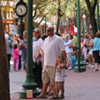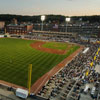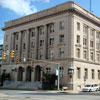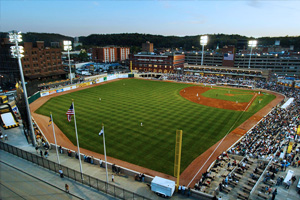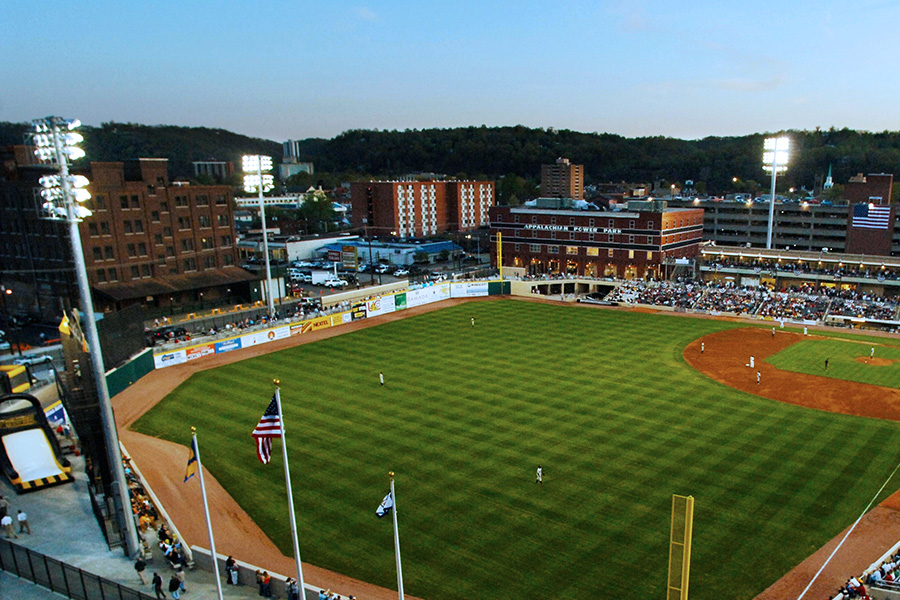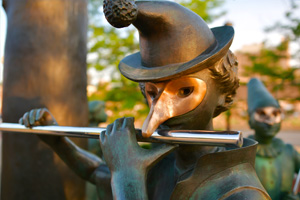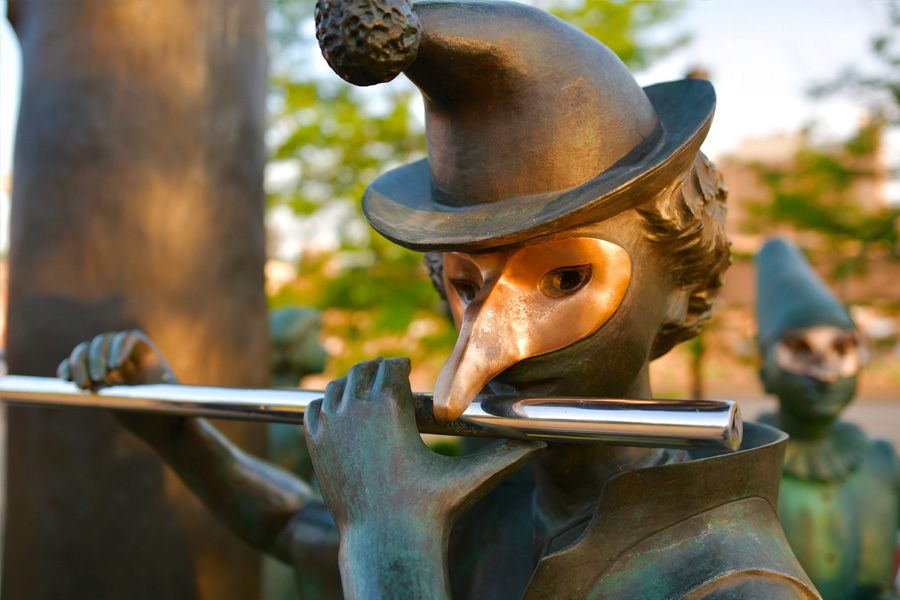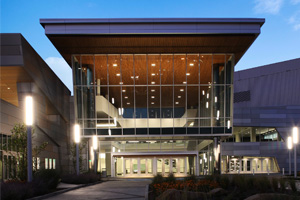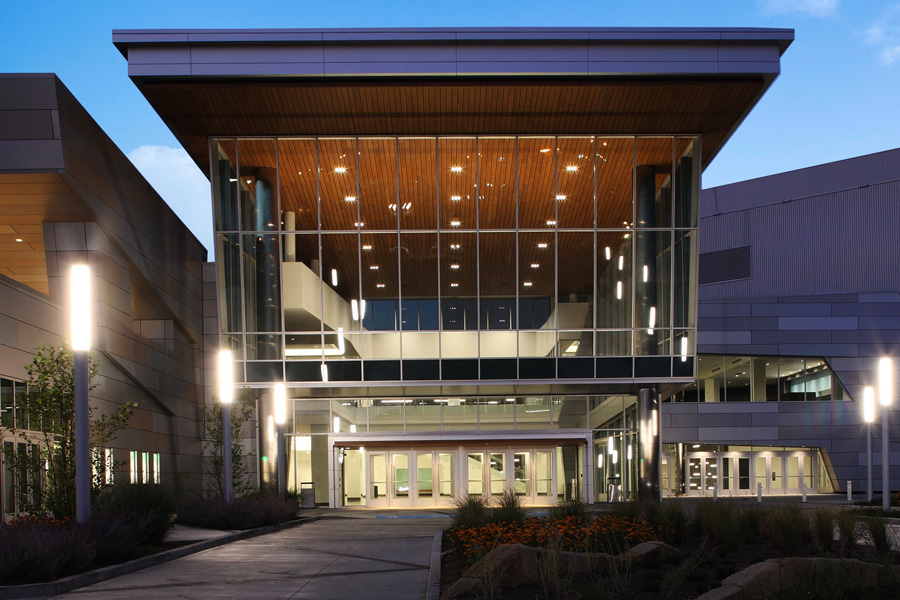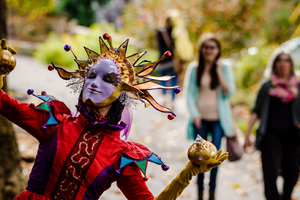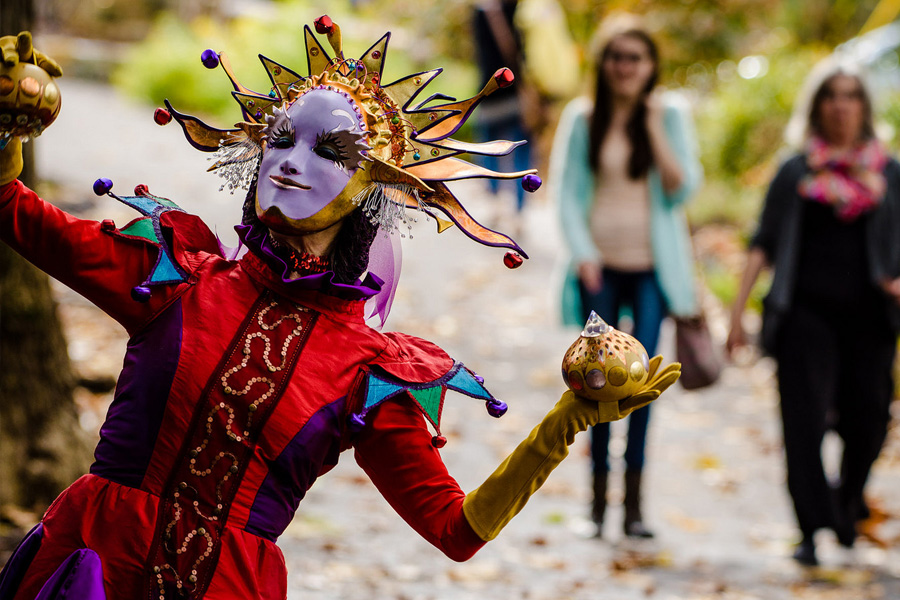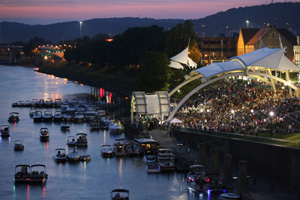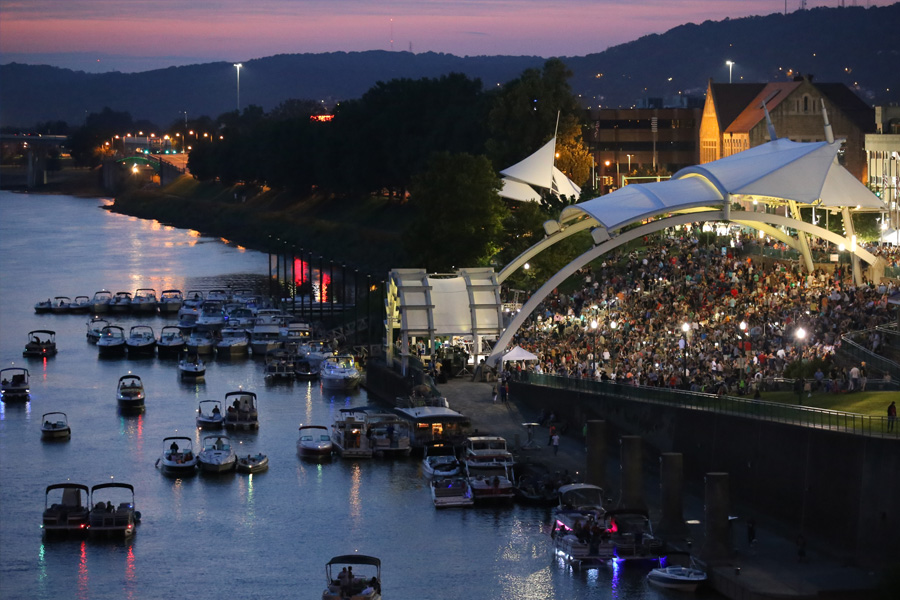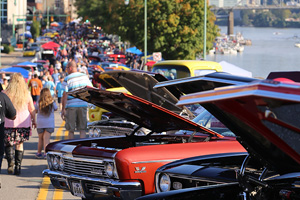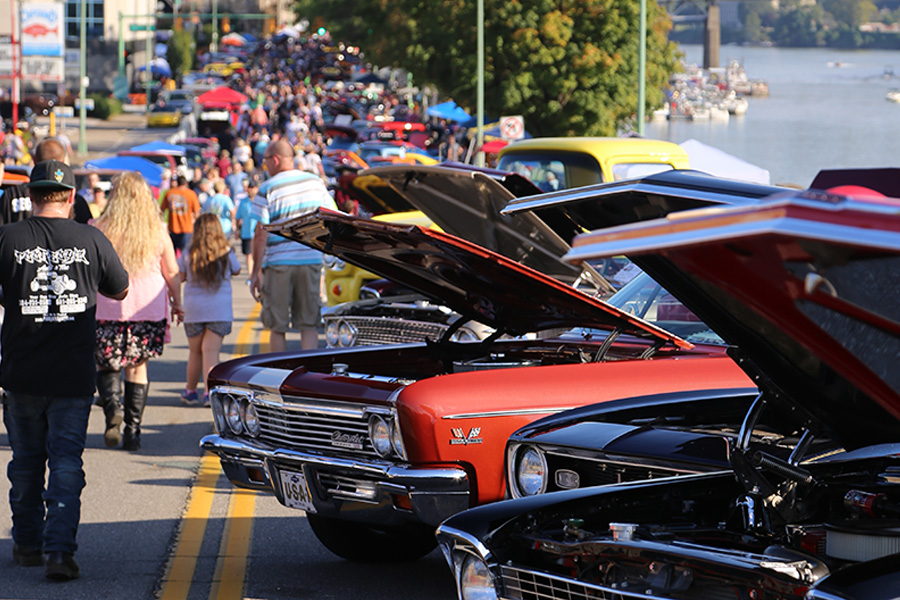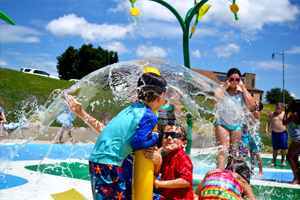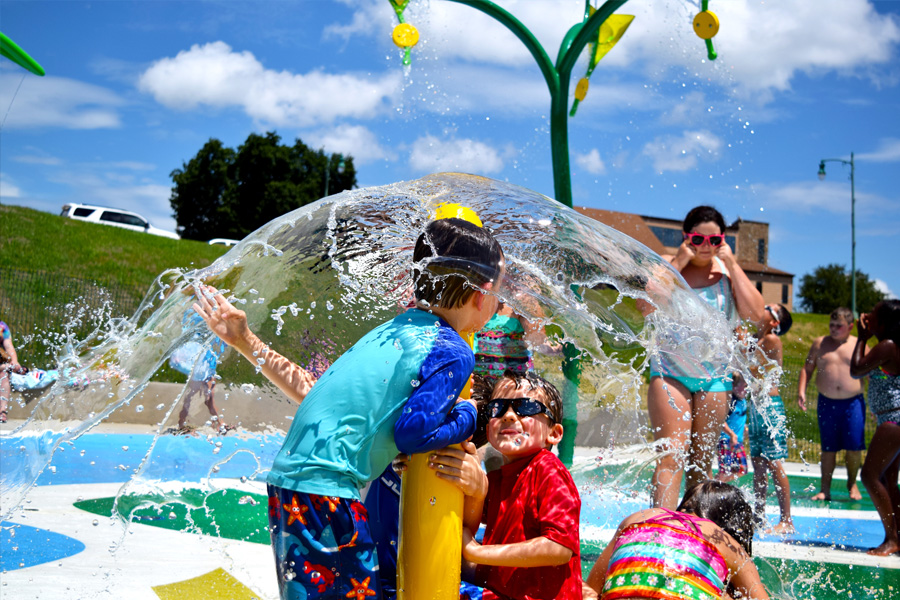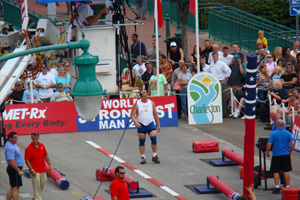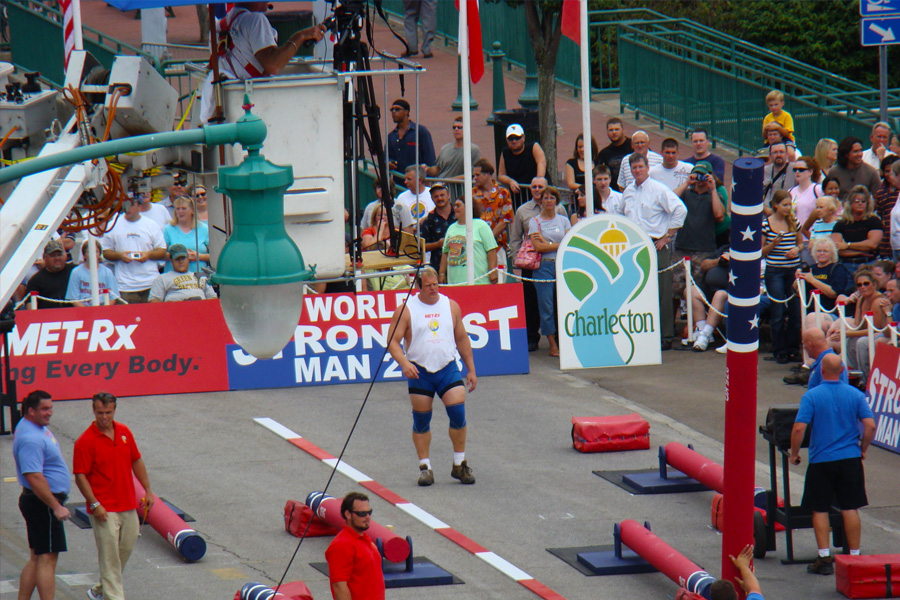As Mayor Danny Jones approaches the end of his administration of governing the City of Charleston, several city leaders have compiled a dynamic list of the progress made in Charleston over the past 15+ years as a solid foundation for the future of West Virginia's capital city.
From a visioning session with City Council and administration leaders more than a decade ago, the overarching goal has been to create Charleston as "the cultural, recreation and business capital of the Appalachian Mountains." This checklist that follows is a headline version of progress across several dozen areas toward that vision. For more specific details about major developments/investments over the past 15 years and many new special events, arts and culture initiatives, click on those links below this introduction.
Taken together, this compilation of achievements provide a more complete picture of the leadership of the Mayor, the stewardship of the team of city leaders during his administration and the active involvement of so many citizens who care deeply about our community.
PROGRESS IN CHARLESTON, LED BY MAYOR DANNY JONES
- $100 million transformation project of the Charleston Coliseum and Convention Center, adding valuable convention space, a new riverfront park and two grand new entrances to the facility;
- More than $120 million more in private investment just since 2012, including hotels, restaurants, tourism infrastructure, mixed use buildings and other projects that make Charleston more attractive for people to live, visit, work, recreate, innovate and invest; (For many more details on the major developments, renovation projects and investments in Charleston since 2003, click here)
- Long term stabilization of the city's historically underfunded pension systems for police and fire department retirees - which had been among the worst funded pension systems in the nation for cities this size - to fulfill our promise to those who have served as emergency responders;
- DHHR decertification and closure of a mismanaged needle distribution program, which had led to hundreds of thousands of needles that were not "exchanged" but discarded in various public places, a rise in crime and criminal vagrancy as people from outside the county came to our city to get needles, and an influx of drug dealers to prey on people suffering from addictions;
- Support for Health Rite WV's harm reduction program that requires more interaction with medical professionals and conversations about treatment options for those exchanging needles;
- Introduction of a Quick Response Team of medical, social service and first responder professionals to try to follow up directly with addicts who have overdosed toward recovery and treatment;
- Expansion of the Charleston Police Department to a force of 173 and creation of hybrid patrols that expand police patrols in underserved areas with an emphasis on community connections;
- More than $100 million invested in private and public sector financing to improve and transform affordable and government-assisted housing - starting with the major renovation of Vista View and including the complete replacement of both Washington Manor and Littlepage Terrace;
- The new Project West Invest to encourage police officers and teachers to live in and strengthen their communities within West Side neighborhoods;
- Improvement of neighborhoods through balanced enforcement of building codes and demolition of 1,066 decaying homes and buildings - most of them on the West Side;
- Enactment of a new State law to streamline the legal process for demolition of abandoned homes in cities and a Home Rule ordinance to give more enforcement authority to building inspectors;
- The Family Reunification and Opportunity Enhancement Program that has provided free transportation to more than 200 homeless people stuck in Charleston so they could return to places where they have family support and better opportunities for assistance and/or jobs;
- Creation of FestivALL Charleston that has empowered Charleston's arts community as never before and has expanded to produce and promote arts and culture in every season of the year;
- New special events that make Charleston more attractive and fun: Moses Auto Group Live on the Levee, Charleston Boulevard Rod Run & Doo Wop, Sports Fest with beach volleyball and jet skiing, and dozens of other events attracting people to neighborhoods throughout the city;
- An explosion of public art under I-64 and throughout neighborhoods and business districts with an emphasis on art and artisans, promoted by the city's first ever Director of Public Art; (For more details about many new events and public art in Charleston since 2003, click here)
- The Schoenbaum Stage, new canopy and expanded boat docks at Haddad Riverfront Park - the first step of the riverfront development master plan - and Charleston's "front porch" on the river;
- Construction of Appalachian Power Park, which kept professional baseball in Charleston;
- Restoration of the street paving program and $17.6 million invested in paving 165 miles of city streets;
- New bike lanes on Kanawha Boulevard, West, to promote safer bicycling and healthier living, in conjunction with a comprehensive study of opportunities for and benefits from new biking trails;
- The public / private partnership that is establishing a new 1 Gig data fiber ring to serve the downtown area (including the city's IT infrastructure) and provide for free Wi-Fi at key locations;
- Vocal, strategic and ultimately successful opposition to the Legislature's consideration of RFRA, a proposal that would have led to discrimination against LGBTQ citizens and damaged Charleston's ability to attract visitors and special events;
- Expansion of local anti-discrimination protections to include LGBTQ citizens, making Charleston the first city in West Virginia to enact that as local law with complaints investigated by its Human Right Commission;
- Creation of the RESET leadership team that has improved communication and built relationships among police officers and community organizations with a new communications protocol for emergency situations, community events to build positive relationships within the city, and strategies to recruit more minorities to the CPD;
- De-escalation and racial sensitivity training of police officers toward prevention of the kind of tragedies and related civil unrest that have erupted in many other communities;
- Introduction of outdoor dining for downtown restaurants in compliance with state ABC rules;
- Reformation of the Charleston Convention and Visitors Bureau into the largest marketing force for conventions, conference, meetings and special events in West Virginia's capital city, leading to 170,000 room nights booked and an economic impact of $100 million in just the last six years;
- Brand development for Charleston as "Hip, Historic, Almost Heaven," with an emphasis on food, arts, recreation and music to attract visitors and special events - and recognition by the Southeast Tourism Society of the Mayor as the leading tourism advocate among government leaders;
- Successful advocacy of developing tourism destinations in the region beyond Charleston, including the Mardi Gras Resort and Casino and the Shawnee Sports Complex to benefit Charleston by strengthening the region's tourism economy;
- Creation of two Main Street programs, which then combined, to promote business development, commercial opportunities and special events in the East End and West Side;
- $115 million invested in new wastewater treatment facilities and lines by the Charleston Sanitary Board;
- $21 million more invested in other infrastructure projects, such as bridge repairs, storm sewers, retaining walls, slip repairs, streetscapes, etc.;
- Stabilization of the riverbank with U.S. Army Corps of Engineers to prevent destabilization of Kanawha Boulevard;
- Installation of the landfill gas collection system at the Charleston Landfill to decrease greenhouse gas emissions and use the energy produced to offset the City's waste disposal costs - all at no cost to city taxpayers;
- Leadership, in close coordination with the West Virginia Municipal League, as a successful pilot program for the State of West Virginia's Home Rule program that decentralized government decision-making toward the most responsive form of government - cities and towns;
- Implementation of the new, strategic parking plan with free evening parking and more convenient transient parking in city-owned garages, and smart meters for more convenience;
- Creation of the City Service Center, a one-stop service center for people needing permits for businesses, buildings and project development;
- Enhancement of the city's employee health care program through the creation of the Employee Health Clinic to stabilize costs, an on-site fitness center, and Wellness Committee for city employees to promote healthier lifestyles;
- Targeted funding for a Health Care Reserve Fund that has meant no premium increases on city employees and families since FY 2005, even while claims increased by 276 percent since then;
- Renovation of the old Roosevelt School into a vibrant community center in the East End;
- Two new elementary schools to serve students on Charleston's West Side;
- The proposed relocation of BridgeValley Community and Technical College to the West Side, centering around the major renovation of long-vacant Staats Hospital Building;
- Partnerships with the University of Charleston involving new and renovated UC athletic facilities, the School of Pharmacy's Pharm UC program, the Graduate School of Business and the committee improving connections between UC students and our city;
- 15 years of free swimming - and 593,000 free swimmers - at city pools;
- Installation of a playground and a new splash pad at Magic Island, new sand volleyball courts and the expanded use of our riverside park;
- More than $200,000 invested in new playground equipment at each of the City's four community centers plus seven more locations in neighborhoods throughout Charleston;
- Introduction of the Police Athletic League to connect police with youth in the community;
- Creation of the Chilton and Hamilton Trails, expansion of the trail system at Cato from one trail to 16 and improvements to the Carriage Trail, making it a signature landmark for hiking - and art;
- Introduction of a Graffiti Removal unit to respond quickly to, and thus discourage, "tagging";
- Improvements to the Brawley Walkway and Fife Street connections that link pedestrian access between the downtown Village District and the Charleston Town Center;
- A new police substation in Slack Plaza for the Hybrid Patrol unit, replacing a shop that had become a haven for people causing problems nearby;
- Installation of a fifth 24/7 ambulance crew to help deal with an increasing number of calls;
- Replacement of Fire Station #3 serving the South Hills and the opening of Fire Station #8 serving Orchard Manor and the West Side;
- Closure of several questionable bars that had become hot spots not for social fun but moreso for crimes, community concerns and problems for neighborhoods;
- Installation of high intensity street lighting that led to a decrease in crime and increase in property values in the East End;
- Expanded Independence Day celebrations with headliner concerts while establishing Charleston as the only city in the region with major fireworks displays on both July 3rd and 4th every year;
- Iconic lighting of two bridges, including the Kanawha Boulevard Bridge, the only one like it in this part of the country;
- Designation of three "Opportunity Zones" to encourage new developments and renovation projects in economically challenged sections of the city;
- Amendment of the City Charter to move Charleston's municipal elections from odd numbered years as stand-alone elections to the even numbered years to coincide with the federal and state primaries and general elections, thus increasing turnout and saving hundreds of thousands of tax dollars;
- Lawsuits and legal filings: to try to keep guns out of municipal recreation centers; to call attention to possible collusion among paving contractors; to prevent State offices and hundreds of jobs from moving out of Charleston; to hold drug manufacturers, distributors and a medical oversight organization accountable for the influx of opioids into our community and the resulting harm to citizens and expenses for our city; and to protect the City's and CURA's interests in the Charleston Town Center Mall;
- Development of the Imagine Charleston comprehensive plan and downtown redevelopment plan with widespread community involvement in and support;
- Unprecedented personal contributions by the Mayor to special events. To help launch FestivALL Charleston, to keep Regatta as vibrant as possible and to make Charleston’s July 4th celebrations so good that they attracted the President of the United States to celebrate here, Mayor Jones personally donated $400,000 to those and other special events between 2003 and 2008. He also donated $20,000 worth of fitness equipment to the City’s new fitness center on the fourth floor of City Hall where several hundred of city employees have worked on wellness and fitness;
- Major events that established Charleston as a host city for world class events, including the 2008 World's Strongest Man Competition, two World Championship Chili Cookoffs, Biggest Loser Run/Walk, and 2014 Hot Rod Power Tour that brought more than 3,000 cars and more visitors to our city and many more.
MAJOR DEVELOPMENTS IN CHARLESTON SINCE JUNE 2003
Over the past 15+ years, Mayor Danny Jones and other elected and appointed leaders of the City of Charleston have worked consistently to make Charleston a more attractive place to live and visit, work and play, create, innovate and invest. Our focused emphasis on upgrading Charleston's amenities that attract people for special events, conferences, entertainment and recreation has resulted in unprecedented private investment in tourism-related businesses, including hotels and restaurants.
Since 2012, private investment exceeds $120 million in and around the downtown area alone. Even though the Great Recession scuttled a few more proposed projects and delayed others because of investor losses, the track record of attracting investment has left a lasting impression on our city.
Major construction or renovation projects, involving Mayor Jones and city leaders:
- Charleston Coliseum and Convention Center
- Appalachian Power Park
- Haddad Riverfront Park canopy and the Schoenbaum Stage
- Courtyard by Marriott
- Four Points by Sheraton and the Recovery Sports Grille
- CAMC Cancer Center
- Staats Hospital building
- Vista View housing complex
- Complete reconstruction of both Washington Manor and Littlepage Terrace
- Charleston Kanawha Housing Authority town home sites in Orchard Manor and beyond
- CKHA headquarters
- Roosevelt Neighborhood Center
- Court Street Overlook
- Charleston Marriott
- Holiday Inn Express
- Charleston Town Center
- Mary C. Snow West Side Elementary School
- Streetscapes on Florida Street, Washington Street, Bridge Road
- Kanawha City beautification projects along and adjacent to MacCorkle Avenue
- Edgewood Elementary School
- Edgewood Summit Memory Unit
- Second Avenue Center
- Tiskelwah Center (elevator for handicapped accessibility)
- UC Softball Field/Watt Powell Annex
- Triana Energy Field (soon to become the Welch Athletic Complex)
- bike lanes on Kanawha Boulevard West
- East End Community Park
- Brawley Walkway/Fife Street improvements
- Charleston Fire Station #3
- Cabela's
- Starbucks on Kanawha Boulevard
- Schoenbaum Tennis Court (Kanawha City)
- CSB Wastewater Treatment Plant (among $114 million in capital projects within the system)
- Roarke Sullivan Lifeway Center for veterans
- Fieldcrest subdivision
- Glenwood Apartments
- Lowenstein Building
- Park View Lofts
Other developments, renovations taking advantage of Charleston's dynamic economic foundation:
- CAMC Memorial Division
- Highland Hospital
- Ronald McDonald House
- Wehrle Innovation Center at the University of Charleston
- UC School of Pharmacy
- UC East Apartments and parking garage
- Hampton Inn Southridge
- Charleston Catholic High School expansion
- Mary Price Ratrie Green Space
- Chase Tower and Steptoe & Johnson Plaza
- Advantage Technology
- Alpha Technology's fiber optic loop project
- Shops at Kanawha
- Trojan Landing
- First Bank of Charleston
- MVB Bank
- Element Federal Credit Union
- Pioneer Credit Union
- Moses Automotive Showroom
- BrickStreet Insurance
- Agsten Construction
- Veterinary Hospital, also on the West Side
- Sunbelt Rentals
- Emmanuel Baptist Church
- Bible Center Church
- Girls Scouts of Black Diamond's urban campsite
- Goodwill Industries
- West Virginia State University EDC and Digiso
- Hospice headquarters
- Charleston Transitional Care
- Good News Mountaineer Garage
- West Virginia Lottery at City Center West
- West Virginia Housing Development Fund
- The Equities House
- Kroger supermarkets and two fueling centers
- Enterprise car and truck rentals
- Locally / regionally owned restaurants: Pies N Pints, Adelphia Sports Bar & Grille, Bluegrass Kitchen, Black Sheep Burrito, Dem 2 Brothers, The Block, Bricks n Barrels, Bistro at the Barge, Lola's, Fujiyama, La Caretta, Plaza Maya, Lola's and several more
- New or renovated chains, including McDonalds, Chipotle, KFC, Chik-Fil-A, Pizza Huts, Wendy's, Tudor's/Gino's, Bojangles and many more
- Southridge expansion: 911 Center, Red Lobster, Panera, Aldi's, Quaker Steak & Lube, Red Fire Asian BBQ & Japanese Grill, Home Depot, Olive Garden, SkyZone, Buffalo Wild Wings, etc.
CAPITALIZING ON ARTS, CULTURE AND NEW EVENTS IN CHARLESTON SINCE JUNE 2003
Charleston's landscape for arts and culture has changed dramatically since Mayor Jones took office more than 15 years ago. The Clay Center had just opened that year, and the Mayor led a group of city leaders eager to maximize Charleston's potential for attracting, empowering and keeping a creative class to make our city a more vibrant place and greater destination for arts, culture and special events.
The genesis of FestivALL Charleston was a key catalyst for progress and signaled a new era of empowering artists, celebrating culture, promoting performances and creating new events here that people had experienced in other places. When people asked, "Why don't we do ____ in Charleston?" a contagious spirit energized more avenues to create: a new classic car show, jet skiing competitions, food and beverage events, free concerts on Friday nights, during lunchtimes, at Streetfests, and much more. Meanwhile public art projects - permanent and temporary - expanded throughout the city, highlighting a vibrant community, and the City hired its first ever Director of Public Art.
A rejuvenated Charleston Convention and Visitors Bureau seized opportunities to promote Charleston as "Hip, Historic, Almost Heaven" and recognized the value of promoting food, art, recreation and culture. So even though the Regatta did not survive an increasing and unmanageable operating deficit in its final year, other events began and expanded, leaving another lasting impression: if you don't think there's anything to do in Charleston, you need to open your eyes, your ears and your minds.
New arts, entertainment, recreation initiatives and events:
- FestivALL Charleston every June
- Moses Auto Group Live on the Levee every Friday during the summer
- Charleston Boulevard Rod Run & Doo Wop
- FestivALL Fall in October
- OktoberWest
- HallowEast
- Hops & Heat craft beer and chili competition
- East End Pub Crawls in March and October
- Downtown Streetfests
- Lunchtime Brown Bag Concerts
- Green Chili Shootout and Fox Trot
- SportsFest weekend with jet skiing, beach volleyball and more
- Capital City Biker Bash
- Bridge Road: BridgeFest
- Special Olympics of West Virginia Summer Games
- Juneteenth Celebration
- WQBE Movie Nights in June
- Capitol City Classic: Run Row Ride
- Jesus Fest
- Mac & Cheese Cook-off
- Downtown Open miniature golf
- Foam at the Dome
- Charley West Bar-B-Q-Fest
- University of Charleston Half Marathon
- Rising Stars: Stand Up & Shine youth talent showcase
- Second Avenue Center basketball league
- Parks & Recreation Winter series (5K, 8K, 10K)
- Rolls on the River
- Light up the Levee
- Relocation of WV Pride celebration and Multi-Fest to the Schoenbaum Stage in Haddad Park
- West Virginia Power baseball at Appalachian Power Park
- South Atlantic League All-Star Games in 2009 and 2019
- World's Strongest Man competition 2008
- Two World Championship Chili Cook-offs
- Biggest Loser Walk/Run (two times)
- American Idol auditions in 2018
- 2014 Hot Rod Power Tour
- Scott Firefighter Challenge (three times)
- National conferences and conventions for the US Marine Corps League, Enlisted Association of the National Guard, Freewill Baptist Church, National Junior Olympic Boxing, among many more
- Creation of Ticketown to provide tickets to live cultural events for economically disadvantaged younger Charlestonians
An unprecedented expansion of public art:
- Pier to Peer / Gallery 64 with 53 murals on piers under Interstate 64
- Four iconic bike rack sculptures by Chris Dutch, Ian Bode, Jeff Fetty and Debbie Amos
- East End Street Works art bricks and street signs (Washington St., E)
- Charley Hamilton's Wonder Mural (Washington St., W)
- Josh Martin's Elk City mural (Tennessee Ave.)
- Rob Cleland's West Side Tile Mural (Washington St., W) and Out and About mural (Elizabeth St.)
- Harry Marinsky's Festival Delle Arti (Clay Center)
- Albert Paley's Hallelujah sculpture (Clay Center)
- Joe Moss' Wind Torn sculpture (Clay Center)
- Jack O Hearn's Mountain Scape fence mural (Post Office)
- John Collier's The Annunciation and Tree of Life sculpture (Leon Sullivan Way)
- Jesse Corlis' Capitol Street Memories (Quarrier)
- Jeff Pierson's All Together Now mural (Franklin Ave.), Mountain Horizons mural (Summers St.)
- Glen Brogan's untitled mural (Washington St. E)
- Chris Dutch's Double Dog Star mural (Washington St., E)
- Rebecca Recco's Power Mural (Plaza East)
- Angel Harless' Lotus mural (Smith Street)
- Matt and Tessie Doty Wallace's Treescape sculpture (Bridge Road)
- Johnathan Cox's New Life sculpture (MacCorkle Ave.)
- Brickscape (Union Building), Dizzy Doc balloon sculptures (Charleston Town Center), Driven by Design (art cabs), Community Keys (pianos) and other temporary public art projects with FestivALL
- Three recent temporary art projects on the West Side: Alexis Weimer’s Wings (Tennessee Avenue), Hope by Alex Morgado and Justin Withrow’s Be Creative mural (by Stonewall Jackson Middle School)
- Plans for more than 100 works of public art in the renovated Charleston Coliseum and Convention Center
- The first-ever city-wide public art inventory of existing works of art, assembled into a booklet and on-line to encourage touring the artworks and updated for maintenance schedules for preservation.

